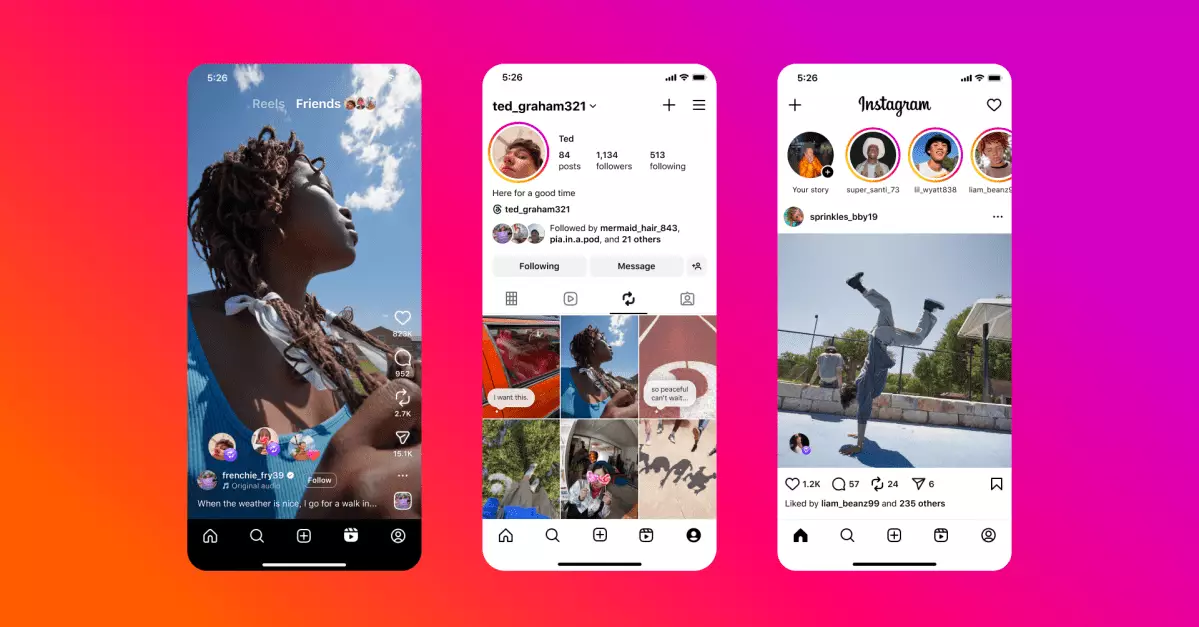In recent years, Instagram has faced a pivotal identity crisis, struggling to balance its roots as a photo-sharing platform with the explosive rise of short-form video content championed by TikTok. By adopting features reminiscent of TikTok and Snapchat—such as reposting, location maps, and activity feeds—Instagram signals a profound shift. While these features aim to boost user engagement and diversify content, they also reveal a cautious attempt to recapture lost relevance amid fierce competition. This evolution raises questions about whether Instagram is reinventing itself authentically or merely patching over an identity it’s slowly abandoning. The platform’s attempt to emulate TikTok’s viral model through reposting hints at its desperation to retain user attention in a saturated digital landscape. But as these features pile up, do they truly enhance user experience or further dilute Instagram’s core essence?
The Power of Reposting: From Stories to Mainstream Feed
One of the most telling changes is Instagram’s decision to allow users to repost public Reels and posts directly to their profiles—essentially transforming how content circulates on the platform. Historically, sharing involved fleeting stories or external links, but now, reposts appear more permanent, residing on profiles and feeds. This shift paves the way for a more dynamic, content-driven ecosystem that could empower creators to amplify their reach and foster community interactions. Yet, it also blurs the line between original content and curated collections, risking a decline in authentic interaction. For creators, this move can be a double-edged sword: while it offers greater exposure, it may also lead to content saturation, making it harder for individual voices to stand out. Personally, I believe this feature could spark a renaissance of collaborative creativity—if implemented with thoughtful moderation—but risks turning Instagram into a chaotic echo chamber if left unchecked.
Location Maps and Activity Feeds: An Oversight or a Connection Booster?
The introduction of a Snap Map-inspired location feature signifies Instagram’s push toward hyper-local and real-time engagement. By allowing users to share and view the last active locations of friends who opt-in, the platform taps into the digital age’s desire for immediacy and proximity. From a privacy standpoint, this delicate balance is fraught with potential pitfalls; users may feel uneasy sharing their whereabouts continuously. However, from an engagement perspective, it can foster a sense of community, especially around events like music festivals or public gatherings. Still, this feature feels more like a superficial attempt to mimic Snapchat’s successful geolocation tool than a genuine innovation. It risks becoming yet another layer of clutter in an already crowded interface. As for the activity feeds showing friends’ interactions, this feature reinforces social validation but also revives privacy concerns. While Instagram offers controls to hide or mute interactions, the overarching question remains: Are users truly comfortable broadcasting their engagement or voyeuristically consuming others’ activity? Personally, I see potential but believe caution is essential to avoid turning the platform into a constant surveillance environment.
The Disappearance of Core Content and Its Implications
Perhaps the most alarming aspect of these updates is how they exacerbate Instagram’s drift away from its original purpose: sharing curated photos with close friends and family. The prominence of Reels and the reduction in visible photos from followed accounts suggest a pivot toward mass reach and virality, often at the expense of meaningful connections. For many users, this shift feels like a betrayal of the platform’s core value—personal storytelling. Instead of fostering intimate interactions, Instagram now often feels like a broadcast medium, where algorithmic recommendations overshadow genuine relationships. This transformation has sparked frustration among creators who struggle to reach their followers amid the noise. Reposting features, activity tabs, and location maps, while innovative, intensify this trend—making the experience increasingly fragmented and impersonal. I believe Instagram is risking its identity by chasing “trendy” features that may temporarily boost engagement but ultimately undermine its foundational purpose. The challenge ahead lies in balancing innovation with authenticity—if not, the platform risks becoming just another social media echo chamber devoid of genuine human connection.
Is This Reinvention Enough to Save Instagram’s Soul?
While these feature updates demonstrate Instagram’s agility and willingness to adapt, their effectiveness remains to be seen. The platform’s ongoing struggle is authentic relevance—how to stay innovative without losing the heart of what made it popular initially. If Instagram’s goal is to reclaim its position as a space for meaningful photo sharing and community building, rushed features rooted in competitor trends might not suffice. Instead, prioritizing user control, reducing clutter, and emphasizing personal content could better serve the platform’s long-term health. As it stands, these incremental updates feel more like Band-Aids on a sinking ship—necessary but insufficient. For Instagram to truly evolve, it must rethink what it wants to be and listen to its core audience’s desires for genuine, less curated interactions. Only then can it craft a future that balances innovation with integrity, fostering a space that feels both exciting and authentic again.

